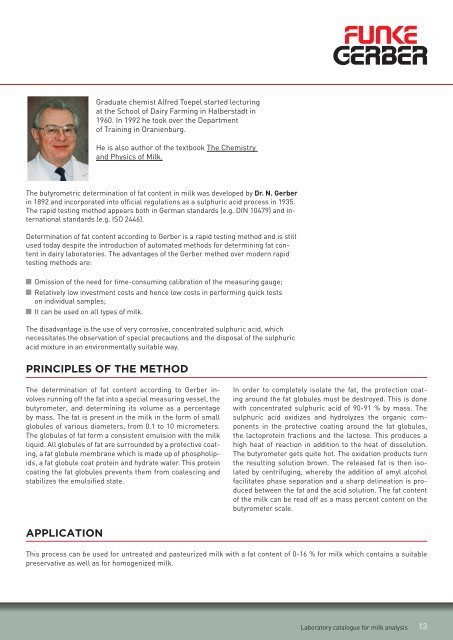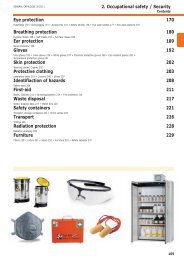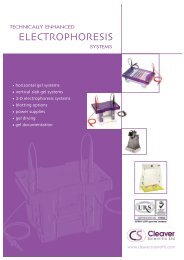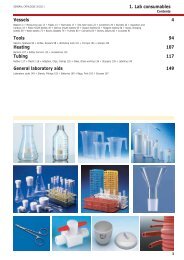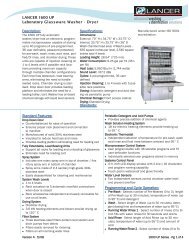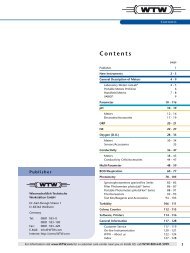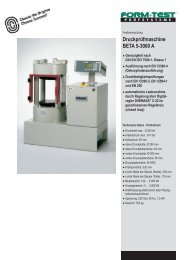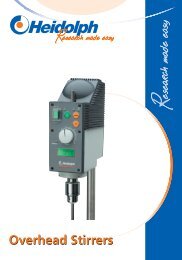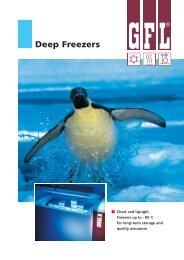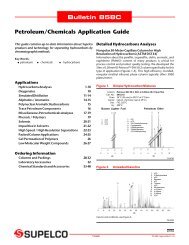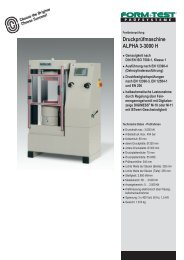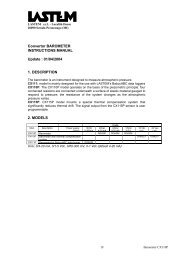LABORATORY CATALOGUE for milk analysis - Labochema
LABORATORY CATALOGUE for milk analysis - Labochema
LABORATORY CATALOGUE for milk analysis - Labochema
Create successful ePaper yourself
Turn your PDF publications into a flip-book with our unique Google optimized e-Paper software.
Graduate chemist Alfred Toepel started lecturing<br />
at the School of Dairy Farming in Halberstadt in<br />
1960. In 1992 he took over the Department<br />
of Training in Oranienburg.<br />
He is also author of the textbook The Chemistry<br />
and Physics of Milk.<br />
The butyrometric determination of fat content in <strong>milk</strong> was developed by Dr. N. Gerber<br />
in 1892 and incorporated into official regulations as a sulphuric acid process in 1935.<br />
The rapid testing method appears both in German standards (e.g. DIN 10479) and international<br />
standards (e.g. ISO 2446).<br />
Determination of fat content according to Gerber is a rapid testing method and is still<br />
used today despite the introduction of automated methods <strong>for</strong> determining fat content<br />
in dairy laboratories. The advantages of the Gerber method over modern rapid<br />
testing methods are:<br />
Omission of the need <strong>for</strong> time-consuming calibration of the measuring gauge;<br />
Relatively low investment costs and hence low costs in per<strong>for</strong>ming quick tests<br />
on individual samples;<br />
It can be used on all types of <strong>milk</strong>.<br />
The disadvantage is the use of very corrosive, concentrated sulphuric acid, which<br />
necessitates the observation of special precautions and the disposal of the sulphuric<br />
acid mixture in an environmentally suitable way.<br />
Principles of the method<br />
The determination of fat content according to Gerber involves<br />
running off the fat into a special measuring vessel, the<br />
butyrometer, and determining its volume as a percentage<br />
by mass. The fat is present in the <strong>milk</strong> in the <strong>for</strong>m of small<br />
globules of various diameters, from 0.1 to 10 micrometers.<br />
The globules of fat <strong>for</strong>m a consistent emulsion with the <strong>milk</strong><br />
liquid. All globules of fat are surrounded by a protective coating,<br />
a fat globule membrane which is made up of phospholipids,<br />
a fat globule coat protein and hydrate water. This protein<br />
coating the fat globules prevents them from coalescing and<br />
stabilizes the emulsified state.<br />
In order to completely isolate the fat, the protection coating<br />
around the fat globules must be destroyed. This is done<br />
with concentrated sulphuric acid of 90-91 % by mass. The<br />
sulphuric acid oxidizes and hydrolyzes the organic components<br />
in the protective coating around the fat globules,<br />
the lactoprotein fractions and the lactose. This produces a<br />
high heat of reaction in addition to the heat of dissolution.<br />
The butyrometer gets quite hot. The oxidation products turn<br />
the resulting solution brown. The released fat is then isolated<br />
by centrifuging, whereby the addition of amyl alcohol<br />
facilitates phase separation and a sharp delineation is produced<br />
between the fat and the acid solution. The fat content<br />
of the <strong>milk</strong> can be read off as a mass percent content on the<br />
butyrometer scale.<br />
Application<br />
This process can be used <strong>for</strong> untreated and pasteurized <strong>milk</strong> with a fat content of 0-16 % <strong>for</strong> <strong>milk</strong> which contains a suitable<br />
preservative as well as <strong>for</strong> homogenized <strong>milk</strong>.<br />
Laboratory catalogue <strong>for</strong> <strong>milk</strong> <strong>analysis</strong><br />
13


